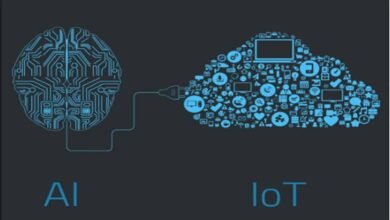IoT Protocols Explained: Tips for Choosing the Right Framework

The rapid expansion of the Internet of Things (IoT) has transformed the way devices communicate, opening a realm of possibilities for interconnected technologies. In this comprehensive guide, we unravel the intricacies of IoT protocols, shedding light on the vital role they play in ensuring seamless communication within the IoT ecosystem. As businesses and individuals navigate the vast landscape of IoT, understanding and choosing the right framework becomes paramount for efficiency and security. Delve into this article as we explore the nuances of various IoT protocols, offering valuable tips to guide you in selecting the framework that aligns perfectly with your IoT application’s needs.
As the IoT network continues to grow, the choice of an appropriate communication protocol becomes a critical decision. The term “IoT protocols” encompasses the rules governing communication between IoT devices, and the significance of choosing the right one cannot be overstated. Whether you’re a seasoned developer, a business owner integrating IoT solutions, or simply intrigued by the world of interconnected devices, this article will provide insights into the diverse landscape of IoT protocols and offer practical tips for making informed decisions. Join us on this journey of understanding, as we demystify IoT protocols and empower you to choose the right framework for your IoT endeavors.
IoT Protocols Explained: Tips for Choosing the Right Framework
Understanding IoT Protocols
IoT protocols are the set of rules that govern how devices communicate within the IoT network. The complexity of IoT systems demands robust protocols to overcome communication challenges such as latency, reliability, and security.
Key Factors for Choosing an IoT Protocol
Scalability
Scalability is vital for accommodating the growing number of connected devices. A protocol must handle the increasing volume of data efficiently.
Security
Ensuring the security of data transmission is paramount. A reliable IoT protocol should incorporate robust encryption and authentication mechanisms.
Power Consumption
In IoT, many devices operate on limited power sources. Choosing a protocol with low power consumption is crucial for prolonging the lifespan of battery-powered devices.
Data Transfer Speed
The speed at which data is transmitted impacts the real-time capabilities of IoT applications. Selecting a protocol that aligns with the desired data transfer speed is essential.
Popular IoT Protocols
MQTT
MQTT (Message Queuing Telemetry Transport) is a lightweight and efficient protocol suitable for low-bandwidth, high-latency networks. It excels in scenarios where minimizing data overhead is critical.
CoAP
CoAP (Constrained Application Protocol) is designed for resource-constrained devices. Its simplicity makes it ideal for IoT applications where lightweight communication is essential.
HTTP/HTTPS
Leveraging traditional web protocols, HTTP/HTTPS is a familiar choice for IoT applications that require compatibility with existing web infrastructure. However, considerations about overhead and security are crucial.
DDS
DDS (Data Distribution Service) is focused on real-time data sharing in distributed systems. It suits applications that demand timely and reliable data updates.
MQTT: A Deep Dive
Overview of MQTT
MQTT operates on the publish-subscribe pattern, allowing devices to send and receive messages through a broker. This asynchronous communication method minimizes delays.
Use Cases
MQTT is prevalent in home automation, industrial IoT, and telemetry systems. Its efficiency in low-bandwidth environments makes it a preferred choice for remote monitoring.
Pros and Cons
Pros:
- Low bandwidth usage
- Asynchronous communication
- Efficient in high-latency networks
Cons:
- Lack of built-in security features
- May not be suitable for scenarios with high data transfer rates
CoAP: Lightweight Communication
Introduction to CoAP
CoAP is designed for simplicity, making it suitable for resource-constrained devices. It operates on a client-server model, facilitating communication in constrained environments.
Applications in IoT
CoAP is commonly used in smart cities, healthcare, and industrial automation. Its lightweight nature makes it ideal for devices with limited processing capabilities.
Advantages and Limitations
Advantages:
- Low overhead
- Supports multicast communication
- Designed for constrained environments
Limitations:
- Limited scalability
- Less suitable for high-security applications
HTTP/HTTPS in IoT
Utilizing Traditional Web Protocols
Leveraging HTTP/HTTPS brings familiarity to IoT applications. Devices can communicate seamlessly with web servers, simplifying integration with existing web infrastructure.
Security Considerations
While HTTP/HTTPS provides a secure communication channel, the overhead may be higher compared to lightweight protocols. Considerations about data efficiency are crucial.
Use Cases
HTTP/HTTPS is commonly used in applications where compatibility with web services is essential, such as smart homes and consumer IoT devices.
DDS: Data Distribution Service
Explanation of DDS
DDS enables real-time data sharing in distributed systems. It operates on a publish-subscribe model, ensuring timely delivery of data to all interested parties.
Real-time Data Sharing
DDS is prominent in applications like autonomous vehicles, healthcare, and financial trading, where real-time data updates are critical for decision-making.
Applications and Drawbacks
Applications:
- Real-time monitoring
- Collaborative environments
Drawbacks:
- Complexity in implementation
- May be overkill for simple IoT applications
Choosing the Right Protocol for Your IoT Application
Matching protocols with specific needs is essential for a successful IoT implementation. Case studies showcasing different scenarios can aid in making informed decisions.
Implementing IoT Protocols in Real-world Scenarios
Successful implementations of IoT protocols provide valuable insights into overcoming challenges and optimizing performance. Continuous monitoring and updates are crucial for long-term success.
Future Trends in IoT Protocols
As the IoT landscape evolves, new protocols emerge, and existing ones undergo enhancements. Staying informed about these trends is vital for future-proofing IoT applications.
Tips for a Seamless IoT Protocol Integration
Testing and validation are crucial steps in ensuring a seamless integration of IoT protocols. Continuous monitoring and updates based on real-world performance contribute to long-term success.
Read More: Tips for Implementing IoT in Agriculture: Boosting Crop Yields
Conclusion
In conclusion, navigating the diverse landscape of IoT protocols demands a thoughtful approach, considering the unique requirements and challenges of each application. The world of interconnected devices is dynamic, with ever-evolving standards and emerging protocols. As we’ve explored various frameworks such as MQTT, CoAP, HTTP/HTTPS, and DDS, it’s evident that there’s no one-size-fits-all solution.Choosing the right IoT protocol requires a careful balance between factors like scalability, security, power consumption, and data transfer speed. The considerations made during this selection process directly impact the efficiency and reliability of your IoT application.
Scalability ensures your system can accommodate a growing number of devices, security safeguards sensitive data, power consumption prolongs device lifespan, and optimal data transfer speed enables real-time capabilities.As we move forward into the future of IoT, staying informed about trends and advancements in protocols is key. Continuous testing, validation, and monitoring of your IoT implementation will ensure its longevity and effectiveness. By understanding the nuances of IoT protocols and following the tips provided, you are well-equipped to make informed decisions that align with the specific needs of your IoT application.
FAQs
What is the significance of choosing the right IoT protocol?
Choosing the right IoT protocol is crucial for ensuring efficient communication, scalability, and security in IoT applications.
How does MQTT differ from CoAP in terms of communication models?
MQTT operates on a publish-subscribe model, while CoAP follows a client-server model, catering to different communication needs.
What are the key considerations for selecting an IoT protocol?
Key considerations include scalability, security, power consumption, and data transfer speed.
Which industries commonly use DDS for real-time data sharing?
DDS is commonly used in industries such as healthcare, finance, and autonomous vehicles for real-time data sharing.
How can one future-proof their IoT application in terms of protocols?
Staying informed about emerging protocols and trends ensures the long-term relevance and efficiency of IoT applications.







